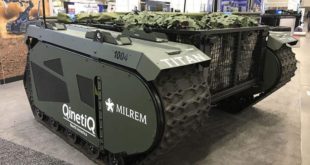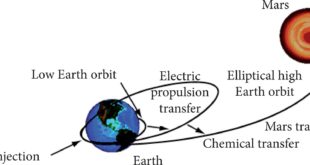Electronics has revolutionized our society by providing many devices e.g. laptops, palm pilots, digital cameras, household robots, etc. Every electronic system or device needs electric power to operate, whether it is from walled AC supply or a battery. This electric power cannot be stored infinitely in any rechargeable device like …
Read More »Solar fiber optic lighting for daylighting of high-rise intensive buildings and military shelters
Conventional daylighting scheme employing windows and skylights are no longer so useful especially for daylighting of high-rise and intensive buildings. Residential buildings with limited natural lighting are generally lit by fuel-based electricity which contributes to increase of CO2 concentration in the atmosphere. Alternatively, the concentrated solar energy can be transmitted …
Read More »Hydrogen Fuel Cell propulsion technology for UAVs and Drones enable quiet, reliable, low-maintenance and long edurance missions operations
UAVs have evolved into increasingly capable platforms deployed for a wide variety of applications. The capability to fight effectively in urban areas against widely dispersed forces, while minimizing collateral damage and achieving information superiority has enabled the UAVs to play a greater role in critical missions. The UAVs have become one …
Read More »Global Military Ground Vehicle Propulsion System trends and Market
A military vehicle is a type of vehicle that includes all land combat and transportation vehicles, which are designed for or are significantly used by military forces. Many military vehicles have vehicle armour plate or off-road capabilities or both. A military truck is a vehicle designed to transport troops, fuel …
Read More »Military Batteries need to be Lightweight, long-lasting, fast, field-rechargeable batteries, rugged and safety critical for mission success
Batteries are critical for military missions since mission success and soldiers’ lives often depend directly on a military battery’s performance. “Batteries enable radio communication among combat squad members and field headquarters. They provide the power to obtain accurate location data essential for maneuver and combat air support. Laser range finders …
Read More »Military electric land vehicles technology requirements and breakthroughs
The US Army is looking into the possibility of adding electric vehicle technology to its fleet of wheeled vehicles. The subject of a draft white-paper proposal by the Army Futures and Concepts Center (FCC), the hope is to simplify maintenance while reducing the logistical problems connected with fossil fuels. …
Read More »Lithium-ion Batteries powered Submarines, UUW and torpedoes have enhanced Stealth, endurance, speed and reliability
Batteries have been used on underwater applications for more than a century, for instance, lead-acid batteries have been used in conventionally powered submarines since the end of the 19th century. Since World War II, submarines have used lead acid batteries. Lead acid batteries are heavy, but they’re also a proven …
Read More »Space propulsion moving to Hybrid chemical and electric propulsion system to power cubesats to Asteriod missions
The primary function of the space propulsion system is to provide thrust, which helps in the functioning of the launch vehicle or satellite. In propulsion systems, the fluid (either solid, liquid, or electric) reacts to initiate acceleration and provide force in the system. An ion thruster is a form …
Read More »Russia launches World’s first floating Nuclear Reactor, to power military forward operating bases, disputed islands and Arctic
Small modular reactors (SMRs) defined as nuclear reactors generally 300MWe equivalent or less. SMRs have generated global interest, and potential future applications are a subject of international research directives. Their are around 50 different SMR designs worldwide according to the IAEA. Project proposals include use of SMRs for desalination, process …
Read More »Researchers develop ultra-thin, Ultra efficient solar cells through new new architectures , techniques, and materials
Worldwide growth of photovoltaics has been fitting an exponential curve for more than two decades. During this period of time, photovoltaics (PV), also known as solar PV, has evolved from a pure niche market of small scale applications towards becoming a mainstream electricity source. The Sun blankets the Earth with …
Read More » International Defense Security & Technology Your trusted Source for News, Research and Analysis
International Defense Security & Technology Your trusted Source for News, Research and Analysis









